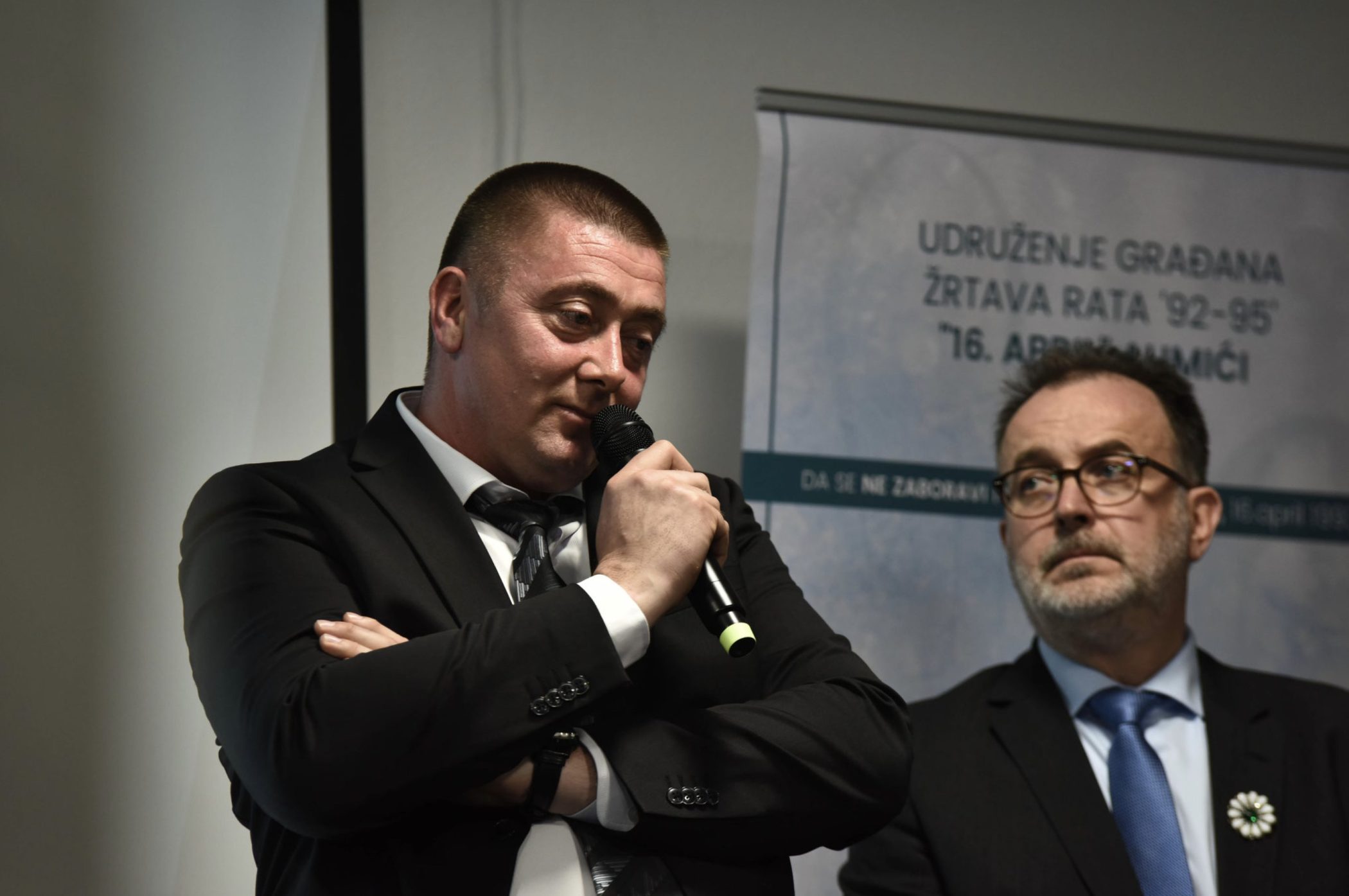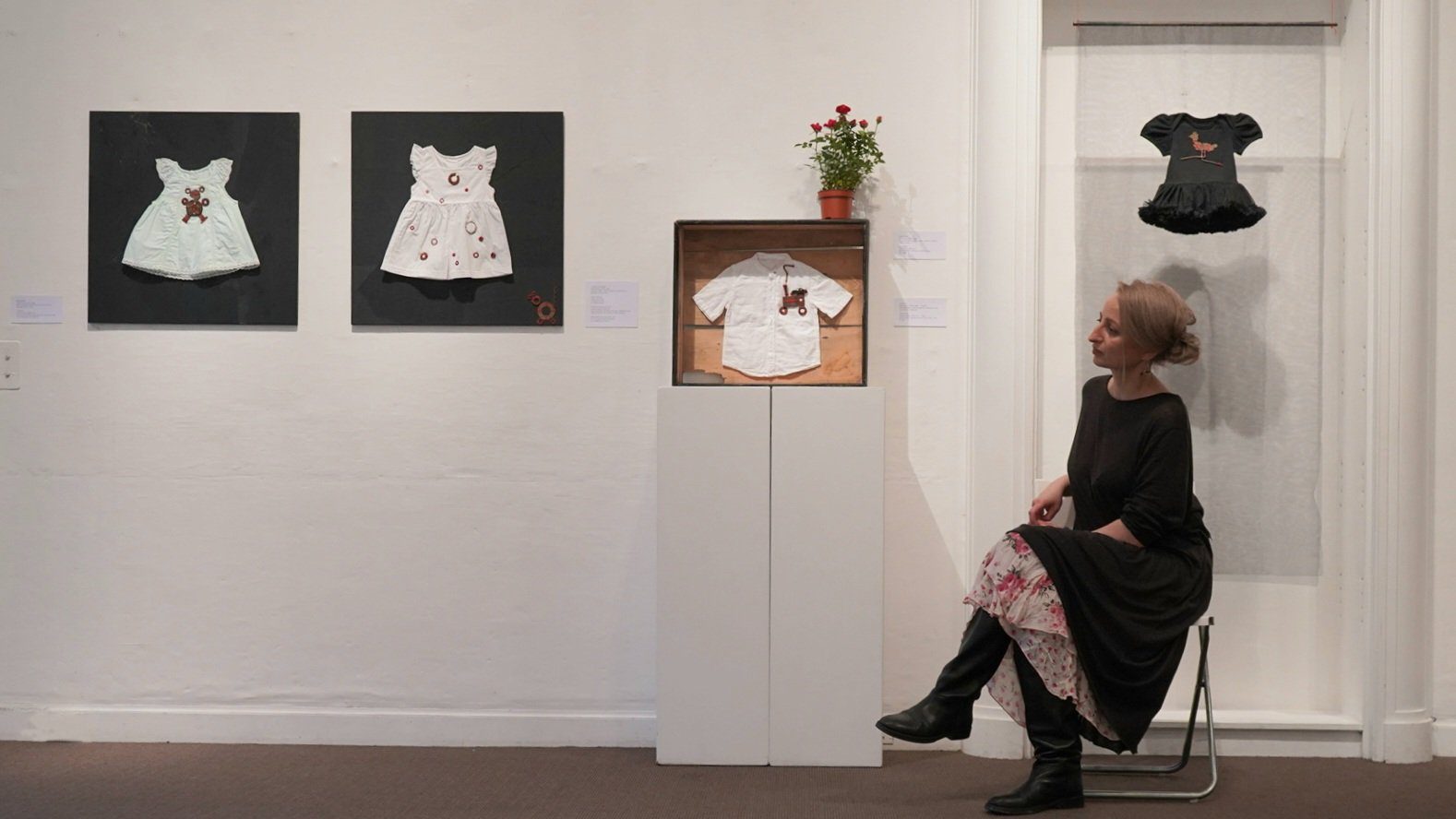This post is also available in: Bosnian
Tens of thousands have benefited.
And that’s exactly what she recalls from the immediate aftermath of Bosnia’s 1992-95 war, a woman named Zada, her husband and brother among 8,000 Bosniak (Bosnian Muslim) men and boys slaughtered by Bosnian Serb forces in Srebrenica, “shoulder to shoulder with the workmen” building her new home in Sarajevo.
“She wanted to provide (for her family),” said Saric.
“I know a number of women from Srebrenica living in different parts of the country who were physically involved in building their own houses, putting the bricks in.”
The image is a metaphor for the kind of female empowerment Saric has been working on for the past two decades as director of Women for Women (Zene za Zene) in Bosnia and Herzegovina.
The original arm of a non-governmental organisation that later went global, Women for Women in Bosnia has helped tens of thousands of Bosnian women get back on their feet after devastating bereavement or the trauma of sexual abuse during a conflict in which 100,000 people were killed and rape was used as a tool of war.
With their men at the front, women were left to provide for their families under the most difficult of circumstances. “Women in the war had their own battles for their lives behind the front line, making sure their families had food and shelter,” Saric, who was a student when the war began and lived through the 44-month siege of Sarajevo, told BIRN by phone from Sarajevo.
“If we exclude fighting, everything else was on the shoulders of women.”
Established 25 years ago, at the height of the war, Women for Women has provided microcredit loans of around 600 euros to 29,000 women to help them open agriculture or handicraft businesses. In 1998, when Saric became director, the NGO launched year-long empowerment courses teaching the skills necessary to establish and grow such small businesses.
Zada was among the first to take the course, seen by Saric in the beginning as simply a way for women to come together.
“They were sharing their stories, sharing their pain, sharing solutions,” Saric told BIRN. Zada, whom Saric recalled as overwhelmed by grief when they first met, “started, step by step, to open up.” She began a business making crochet fabrics and tablecloths.
Women for Women International has since helped more than 460,000 women in eight countries – Bosnia, Afghanistan, Democratic Republic of Congo, Iraq, Kosovo, Nigeria, Rwanda and South Sudan.
Often, the odds are stacked against them.
“Bosnia is not a very entrepreneurial society because of the previous socialist system, anddiscouragement of entrepreneurship,” said Saric. “But women have started building their own businesses. Of course it’s not very stable – it’s not a stable country, and the economy is not doing very well, so it’s challenging for everyone.”
“But women are trying and trying.”
Saric cites the example of two Srebrenica survivors, Nura and Refija, who both lost their husbands and who took the programme offered by Women for Women a decade later, in 2005. Today, they share a home and have begun a vegetable garden. “They say it is what keeps them alive,” said Saric.
Saric still goes to Srebrenica to visit the widows who returned to rebuild their homes.
“I think they are the loneliest people in the world,” she said, “but they are also among the most resilient.”
It was their testimony, and that of other Bosnian women, that helped convict those behind the worst massacre on European soil since World War II and the tens of thousands of rapes that occurred in detention camps.
Women took the stand and lobbied for justice often in the face of intense intimidation; in 2012, the UN war crimes trial of former Bosnian Serb commander Ratko Mladic, architect of the Srebrenica massacre, was briefly halted when he drew a single finger across his throat at a woman in the public gallery who had lost her husband, brother and sons.
“They spoke truth to power and stood together,” said Saric.
“It is so important that the women of Srebrenica live in Srebrenica, and that they are part of society, that they have their own place there, and that they are active.”
In July, Saric took part in the March of Peace, a three-day walk from Nezuk near Tuzla to Srebrenica (about 75 miles), to commemorate the men and boys killed as they tried to escape to safe territory.
“Our work in Srebrenica was monumental because it told the women who felt abandoned by the world that they were not alone, that someone cared about them and their needs,” Saric said.
“It’s important to continue to build on that solidarity and continue to invest in women’s empowerment. This is why we join the March every year… We’re here to honour them and their resilience.”
Saric said Zada’s children had graduated, married and built “decent lives”.
“Recently I met her in the street. She was carrying her handicraft products. It’s exactly what we wanted – to help women build better lives, and make the best of any opportunities before them.”



